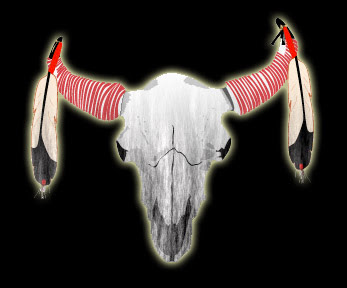 Blood Tribe / Kainai and the Confederacy and Peigan Siksika possession as the oldest inhabitants of the western prairie. Blackfoot can be found from other language groups as diverse believe, leading linguists, that the Blackfoot people have been living separately from other language groups for a long time. Archaeologists date the level of hunting culture in the field to 11,000 years before present.
Blood Tribe / Kainai and the Confederacy and Peigan Siksika possession as the oldest inhabitants of the western prairie. Blackfoot can be found from other language groups as diverse believe, leading linguists, that the Blackfoot people have been living separately from other language groups for a long time. Archaeologists date the level of hunting culture in the field to 11,000 years before present.Blood Tribe a society, a life entirely separate and independent. Its traditional area rich in natural resources, providing all the basic needs of the economy are fed. well-developed social structure, culture and political system provides a solid basis that can excellence in every aspect of life.
Blood tribe allied politically, culturally and economically with the Siksika (Blackfoot) and Peigan (North and South Peigan) formed what historians call the Blackfoot Confederacy. traditional areas of the Confederacy was described, in the time in the history of how the limits on the north by the North Saskatchewan River, Alberta, on the south by the Yellowstone River in the U.S. state of Montana, the west by the Rocky Mountains and east by the Sand Hills in Saskatchewan.
Strength and endurance of the Blackfoot Confederacy highly valued by designers and agents of Western expansion. Said Lewis and Clark Expedition was forced to avoid a complete history of the region and the Blackfoot Blackfoot Confederacy of the faithful regard for the protection of land, resources and trade interests. People talk Blackfoot was one of the last First Nations enter into agreements with the U.S. in 1855, by Lamebull Agreement. On the British side of the 49th Latitude, is the root not in agreement with the United Kingdom until 1877 in force.
Seven agreements, especially the peace agreement is to facilitate tool-existance peace with the newcomers. To be compensated for the destruction of the main economic resources, water buffalo, and the share of land, certain economic benefits to the United Nations for the first time one. 7 The agreement involved area of 50,000 square miles of land south of the Red Deer River and is bounded by the Rocky Mountains.
The blood, along with the Siksika and T'ina T'suu have a backup to their land along the Bow River, surveyed in 1878 after an agreement in 1877. However, Chief Red Crow of the blood was never discussed this and does not support such legislation. Blood Tribe reserved refused to settle land in the Bow River, the country of their choice, is located further south.
Red Crow was chosen for the blood, the land between the Waterton River and St. Mary's River back to the Rocky Mountains and as far south as the Canada - United States International Border.
In 1882, JD Nelson, a reserve for the Blood Tribe, consisting of 708.4 square kilometers measured. Southern limit was set at nine miles from the international border. But in 1883, reserves were resurveyed, without explanation or consultation with the Blood tribe. As a result of reduced reserves of 547.5 square kilometers. Blood Tribe has never been a correction and continue to try to get to improve their understanding formally selected and identified by Chief Red Crow in 1880 and the differece 1882-1883 surveys.
The blood and nourishes his fierce independence and pride in their identity as Kainai. This spirit enabled them to successfully resisted the efforts of the government, churches and other European agencies, policy and practice can have a major negative impact on cultural identity and rights. Today, the Blood Tribe to draw strength for the final attempt, a unique vision for the future to bring.










No comments:
Post a Comment